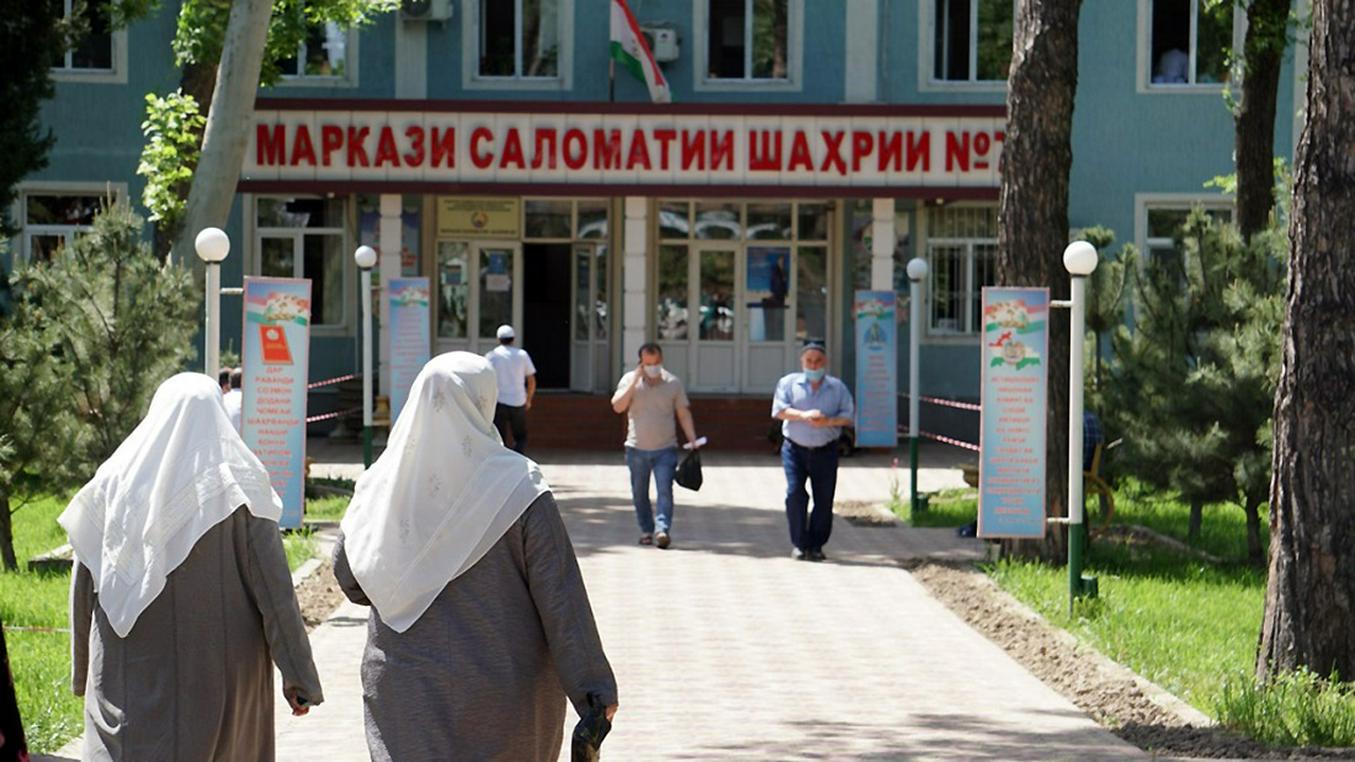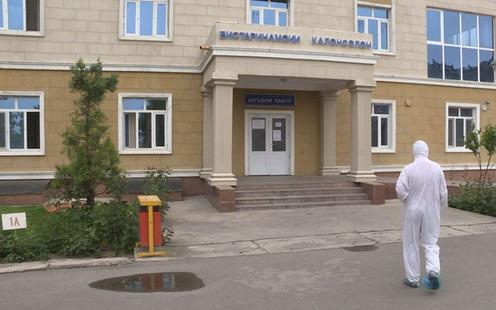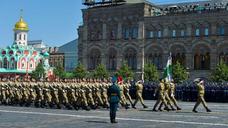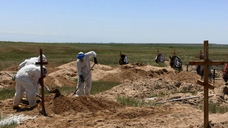After weeks of denial, on 30 April the Tajik authorities finally admitted the existence of coronavirus infections in the country, confirming 15 cases of the illness. Two days later, by the evening of 2 May, state TV was already reporting 76 infections and two deaths. As of 8 May, the number of confirmed infections has risen to 522, with 14 deaths. 4,286 people are said to be in hospital under observation. Yet who the first patient in the country was, when and how the coronavirus came to Tajikistan – on all this the government is still yet to provide any information.
Unanswered questions
For the last month, local and international media outlets have been reporting almost daily on pneumonia deaths in Tajikistan. The first such story was published on 5 April, when RFE/RL’s Tajik service Ozodi reported that a hospital in the Jabbor Rasulov district of the country’s northern Sughd region had been closed for quarantine following the death of one patient there from pneumonia. Officials swiftly denied any suggestion that this was due to the coronavirus, stating that tests for the virus had come back negative. After this, reports of fatal cases of pneumonia flooded in one after the other. Some of them were covered by the media, others Tajiks heard about only on social media platforms. Yet the authorities continued to deny any link between these deaths and COVID-19, categorically asserting that Tajikistan was free of the virus. Suspicions that there was something fishy with the official claims were strengthened by eyewitness accounts that the authorities were not returning some pneumonia victims to their families, that the families were not being allowed to touch the victim’s bodies, or that the bodies were being buried by healthcare workers themselves.
Only on 30 April, the day before the arrival in Tajikistan of a special mission from the World Health Organisation (WHO), dispatched in order to check on the epidemiological situation in the country, did the authorities confirm the first cases of COVID-19. Yet, to date, there has still been no information whatsoever about who the first confirmed patient was, how they were infected, and who they have been in contact with – despite the fact that openness in these questions is one of the key preconditions for holding back the spread of the epidemic.
From the end of January, after news emerged of the spread of the virus outside of Wuhan, Tajikistan suspended flight connections first with China and then with a number of other countries, and sharpened controls at entry points along its borders. At the start of March, the authorities introduced entry restrictions for foreigners, and on 20 March they totally suspended international air travel. At the same time, land borders were closed for the movement of ordinary citizens, with exception being made for goods lorries only.
Back at the start of February, in line with international recommendations, people arriving in Tajikistan began to be placed in 14-day quarantine in an attempt to prevent the infection from being brought into the country. At first the authorities were selective about who they placed in quarantine, doing so only in the case of travellers arriving from countries where COVID-19 cases had been confirmed, but from around 20 March they began to quarantine all new arrivals to the country. If the first infections were detected on 29 April, then they must have contracted the virus in the middle of that month. How did the virus infiltrate the country at that particular point, when for at least three weeks the country’s borders had been closed and all new arrivals were being placed in quarantine? Or were some exceptions in fact made? The leader of the Social Democratic Party of Tajikistan (SDPT), Rahmatullo Zoyirov (who himself recently became the second political party leader in Tajikistan to be diagnosed with the virus – ed.), suggested that some people who were carrying the virus had been allowed to “bypass quarantine” through nepotism and bribery. Knowing the reality of life in Tajikistan, where money and contacts decide, if not everything, then at any rate a great deal, such a possibility seems more than likely.
Ignorance or negligence?
The search for answers to these questions leads to the reasonable hypothesis that the virus was brought to Tajikistan sometime back in February or March. Before the total suspension of flight connections, up to 20 flights arrived in the country every day, with a normal passenger flow of up to 6,500 people. Hundreds of people passed through Tajikistan’s border crossings each day. Back then, hardly any of them were being placed in quarantine.
But in the middle of March, the first cases of coronavirus were already being confirmed in neighbouring Kyrgyzstan and Uzbekistan. In Kyrgyzstan, moreover, it emerged that the virus had been imported into the country by pilgrims returning from the umrah (lesser hajj) in Saudi Arabia. At exactly the same time, Tajik pilgrims were returning home too. In Uzbekistan, the first virus cases were imported from France and Turkey. And Tajik citizens too were sitting on the very same flight from Istanbul to Tashkent on 15 March. They were later tracked down after returning home and placed in isolation. But if we allow for the fact that 50-80% of those infected with COVID-19 remain asymptomatic, then they too could have been bearers of the virus.
 Nowruz celebrations in Khujand, 23 March 2020. Photo by the Press Office of the President of Tajikistan
Nowruz celebrations in Khujand, 23 March 2020. Photo by the Press Office of the President of Tajikistan
Nevertheless, the Tajik authorities pressed ahead with large-scale celebrations of Nowruz in Khujand – the administrative centre of the Sughd region which borders Kyrgyzstan. A theatrical performance involving tens of thousands of people was staged, and all over the country public celebrations and mass parades were held. This was done despite the fact that the WHO had earlier sent a letter to the president’s office calling on the authorities to refrain from holding mass cultural events, as these “could have serious consequences for public health”. And then, at the start of April, reports of the first fatal cases of pneumonia came from this very same Sughd region. A mere coincidence perhaps?
Against the backdrop of a large number of patients with symptoms of atypical pneumonia, the authorities could hardly fail to suspect that the culprit was COVID-19. Yet they were either unwilling to admit the real state of affairs or suppressed information that was presented to them. It should be pointed out that, according to information from the Tajik health ministry, by 27 April around 4,100 tests had been carried out, 800 of them being repeat tests. And all these tests, so the ministry says, came back negative. It is not now possible to check these claims since patients with clear symptoms of COVID-19 were not shown their test results.
Immediately after the first official cases were confirmed, health ministry press secretary Bibikhonum Darveshzoda stated that the authorities “had suspected that it was COVID-19, but had not received reliable proof and confirmation from the laboratory”. “There were many people with symptoms of the coronavirus, but their tests came back negative. We fought this pneumonia wave as if it was the coronavirus pandemic,” she said.
The health ministry’s previous rhetoric, however, was rather different. In its response to enquiries from a group of civil society organisations back on 24 March, the ministry urged people not to lend credence to unsubstantiated rumours and announced that 5,023 people in the country had died of pneumonia in the first three months of this year, 169 fewer than the equivalent period last year.
On 1 May, however, new data appeared on the website of the National Bank of Tajikistan, according to which 5,489 people fell ill with pneumonia in the first four months of this year, 850 more than between January and April last year. Where the National Bank got these statistics from was not clear, but it is obvious that they contradict the information given by the ministry of health.
Meanwhile, in an interview with Sputnik back at the start of March, the director of Russia’s I. I. Mechnikov Research Institute for Vaccines and Sera, virologist Vitaly Zverev, had advised his Tajik colleagues to keep careful track of statistics on pneumonia cases in the country, underlining that a rising trend would be the first signal that something was wrong.
Lost time
Unfortunately, officials in Tajikistan have long since stopped listening either to specialists or to the general public. The authoritarian system of government that has been installed in the country is totally incapable of transparent governance or any form of productive dialogue with society. The special team set up to counter the spread of the coronavirus has neither a press office, nor a website, nor even a telephone number, and does not provide journalists with the timely information they need in order to do their jobs. Meanwhile, representatives of media outlets who try to get hold of some kind of information are accused by the health ministry of spreading lies and aggravating the crisis. All this at a time when, all over the world, providing the public with up-to-date information is being shown to be a crucial precondition for holding back the spread of infection and reigning in panic.
In neighbouring Uzbekistan, Kazakhstan and Kyrgyzstan, a state of emergency has been in place since the middle of March. Whole cities and regions have been quarantined, schools and universities have been closed and people sent home from work to self-isolate, while the authorities have openly informed the public about confirmed cases. In Tajikistan, however, people have carried on with their ordinary lives – going to work and school, meeting with friends, relaxing and celebrating together. Officials kept repeating, like a mantra, that “there’s no coronavirus in Tajikistan”, thereby lulling the population into a false sense of security. At the same time, they set up extra beds in hospitals, disinfected schools and streets, ordered textile companies to switch to mass-producing masks, and mounted a public awareness campaign about the virus. But they did not close schools and universities until the end of April, and have not introduced a general lockdown or ordered people to observe social distancing and wear masks. For this reason, the majority of the public did not take the threat seriously.
Activists feel that the special coronavirus task force set up under Prime Minister Kohir Rasulzoda has proven of little use in preventing the spread of the infection. It was precisely this that Tajik doctor Mukaddas Umarova called attention to in her widely-shared post on Facebook, in which she accused the Tajik health ministry and other decision-makers of “incompetence, inertia, unprofessionalism and negligence” and proposed a set of concrete steps to hold back the epidemic. As a first step, she says, the current taskforce needs to be replaced with “energetic specialists who can take control of the situation”, since ineffective decisions have already caused too much time to be wasted.
On Tajik social media, many users and activists are calling for the leadership of the COVID-19 taskforce, the head of the health ministry, and also the WHO’s permanent representative in Tajikistan, Galina Perfilieva, to be called to account for the rise in pneumonia deaths, accusing the latter of supporting the Tajik government’s official position in her public statements. (Note: After this article was first published, the health minister of Tajikistan has been replaced (with no reason given), and Galina Perfilieva has announced that she will be leaving her post, though she says that this is simply due to the planned expiry of her contract).
Saving people or the budget?
A number of experts and journalists in Tajikistan feel that the authorities were forced to finally confirm the presence of the coronavirus in the country by the fact that hospitals have been rapidly filling with pneumonia patients throughout April and it was no longer possible to conceal the obvious reality. And the imminent arrival of the WHO mission served as a catalyst. The prolonged denial of COVID-19 infections in the country was likely dictated by economic concerns, one Tajik political analyst told Fergana, on condition of anonymity.
“The Tajik authorities were faced with a tricky decision: save the budget and the economy or save people’s lives. During his speech ahead of the start of Ramadan, the president advised agricultural workers to delay the fast and continue working in the fields, in order to stave off food supply problems later down the line. Even now, when the coronavirus has already been confirmed in the country and the number of cases is rising, the president has urged people to continue living and working as normal. This suggests that the government will probably not introduce a general lockdown or state of emergency, since the suspension of operations for small and medium-sized businesses and the general decline in economic activity will cause a sharp drop in revenue for the state budget, which is made up 70% by tax receipts. Financial assistance from abroad is hardly likely to close such a gaping hole in the budget.
“At the same time, a fall in the volume of migrant worker remittances is expected during 2020, which will strike a further blow to the socio-economic situation in the country. But covering up the epidemic could have even more damaging effects for food security, financial-economic security and social security. If the number of patients really explodes and hospitals are unable to deal with the load then the authorities will still be forced to resort to coercive measures, shut down some industries and services and spend significantly more money on treating those who have fallen ill. Our neighbours, drawing on the experiences of other nations, introduced lockdowns immediately, as soon as the first cases were detected. But in Tajikistan, the authorities decided to try to “outsmart” the illness, to pretend that it doesn’t exist,” the expert says.
There are currently still no stay-at-home orders in Tajikistan, but city streets, especially in Dushanbe and Khujand, are noticeably more empty than usual, partly due to the fact that students and school pupils have been sent home on holiday. A lot of people are trying not to leave their homes unless necessary.
Statistics from the first few days after the acknowledgement of coronavirus cases in the country are showing a sharp rise, and, as we have seen in other countries, will likely continue to gather pace. In the case of Tajikistan, however, we are hardly likely to find out the real numbers of infections and deaths: as before, health ministry officials are trying to paint a picture of epidemiological wellbeing, reporting, in the style of Soviet-era propaganda, on the country’s full preparedness to “defeat COVID-19”, at the same time as ordinary medical staff in hospitals around Tajikistan complain of shortages of protective gowns, ventilators, medicines and other items so desperately needed in the battle to save people’s lives.
Hasan Muhibbi
Translated and updated by Nick L.
-
 25 September25.09I Am Proud to Have Been Part of the Triumph of the Tajikistan National TeamGela Shekiladze sums up three years in Tajik football
25 September25.09I Am Proud to Have Been Part of the Triumph of the Tajikistan National TeamGela Shekiladze sums up three years in Tajik football -
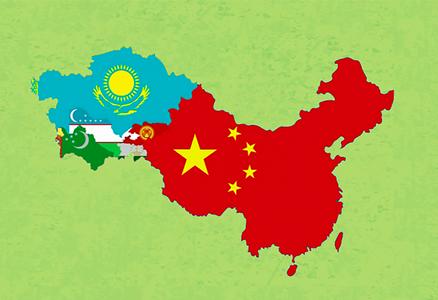 17 September17.09Risky PartnershipWhy Dealing with China Is Harder Than It Seems at First Glance
17 September17.09Risky PartnershipWhy Dealing with China Is Harder Than It Seems at First Glance -
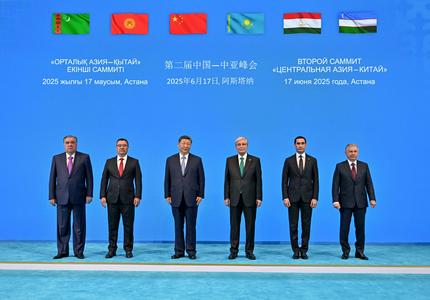 18 June18.06Unconditional Eternal FriendshipWhat China Offers Central Asian Countries
18 June18.06Unconditional Eternal FriendshipWhat China Offers Central Asian Countries -
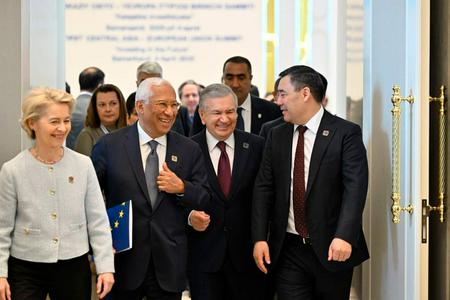 07 April07.04Central Asia, a Region at the Center of It AllHow to Become a Global Player Without Leaving Home
07 April07.04Central Asia, a Region at the Center of It AllHow to Become a Global Player Without Leaving Home -
 14 February14.02Make Central Asia…How U.S. President Donald Trump's Policies Will Affect the Region
14 February14.02Make Central Asia…How U.S. President Donald Trump's Policies Will Affect the Region -
 09 August09.08The two deportations of YaghnobDeep in the Tajik mountains live the last bearers of the dying language and culture of the ancient Sogdians
09 August09.08The two deportations of YaghnobDeep in the Tajik mountains live the last bearers of the dying language and culture of the ancient Sogdians
